Image
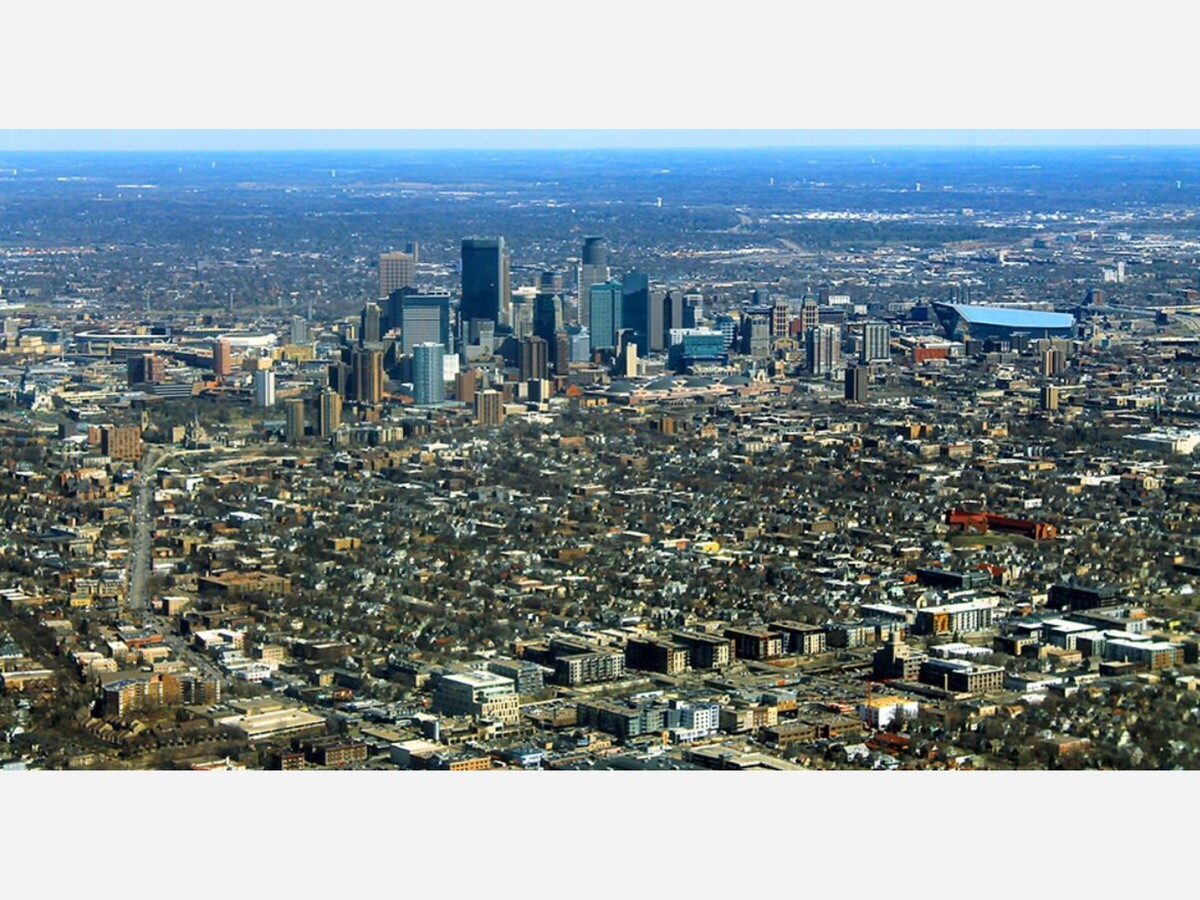

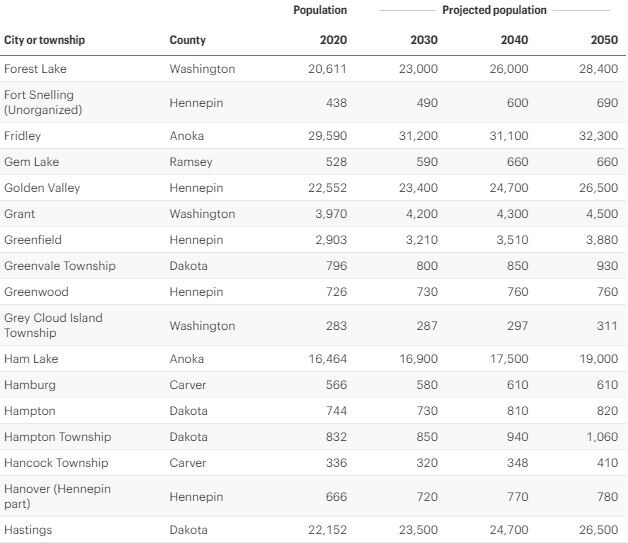
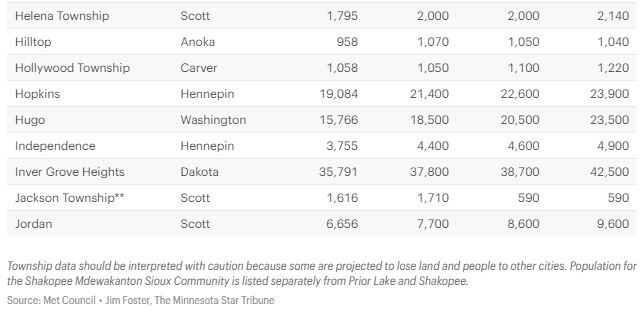
Met Council Forecasts Where Population Will Grow Across Twin Cities: Look Up Your City
Plus four things to know, including which cities are expected to grow the fastest or not much at all through 2050.
The Twin Cities region will add 650,000 people by 2050, if the latest Metropolitan Council forecast holds true.
That’s like tacking the population of Boston or Vermont onto the seven-county metro area.
That growth is slower relative to recent decades. But the forecast predicts the population gain will be broad-based across Twin Cities communities, said Met Council Principal Forecaster Todd Graham.
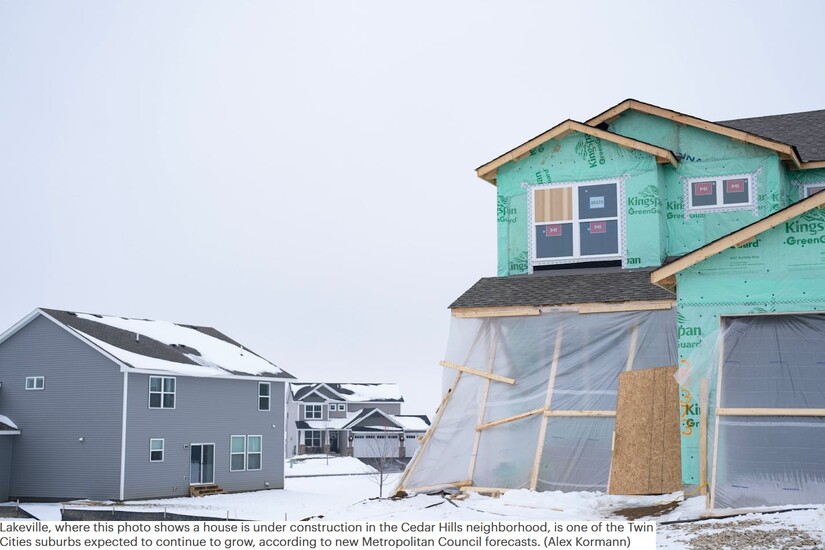
“All parts of the metro receive some share of the growth,” Graham said.
The Met Council makes these forecasts every 10 years with updates in the interim, Graham said. The regional governing body is set to vote on the new one, which covers 2020 to 2050, this week.
The forecasts are a two-part process. First, a forecasting model looks at economic activity and employment to predict population at the regional level. At the local level, another model predicts change through real estate data, past trends and other factors, such as cities' land use plans.
Here are four takeaways from the new population estimates and a table with forecasts for individual cities.
Met Council projects city populations through 2050
Use this table to look up your city's projected population for 2030, 2040 and 2050.
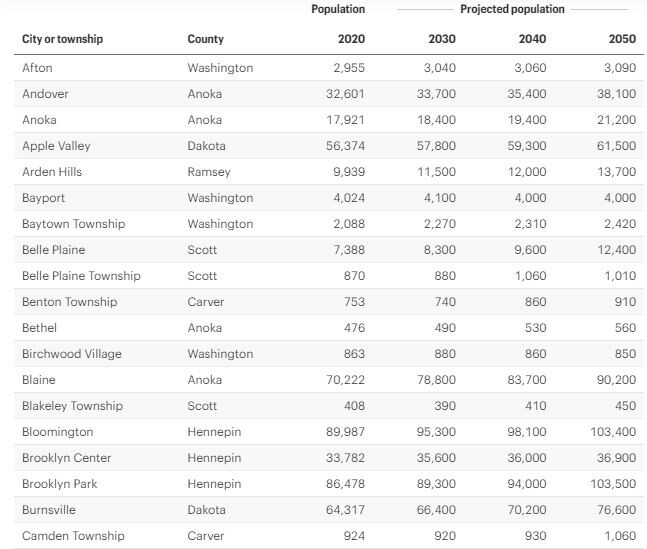
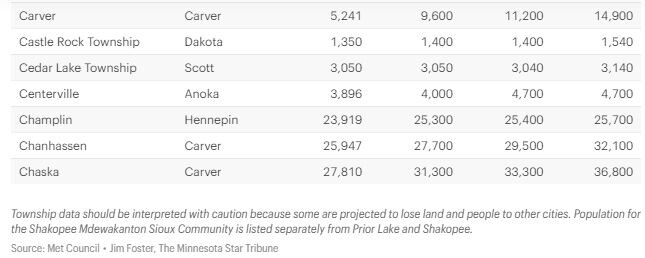
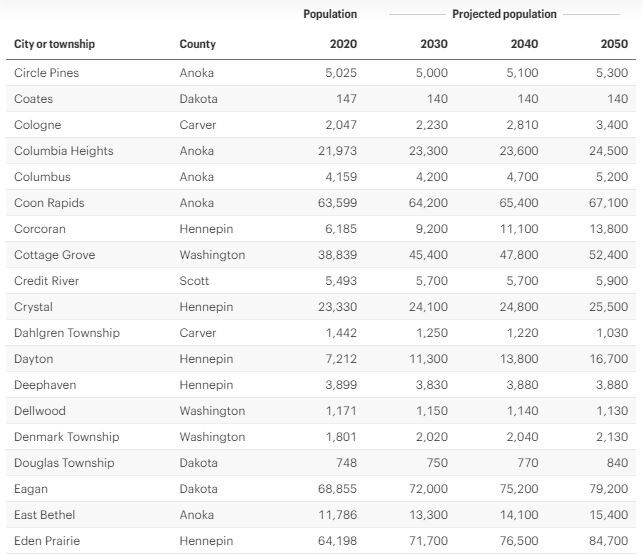
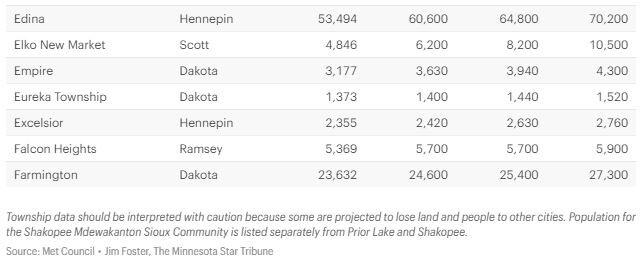
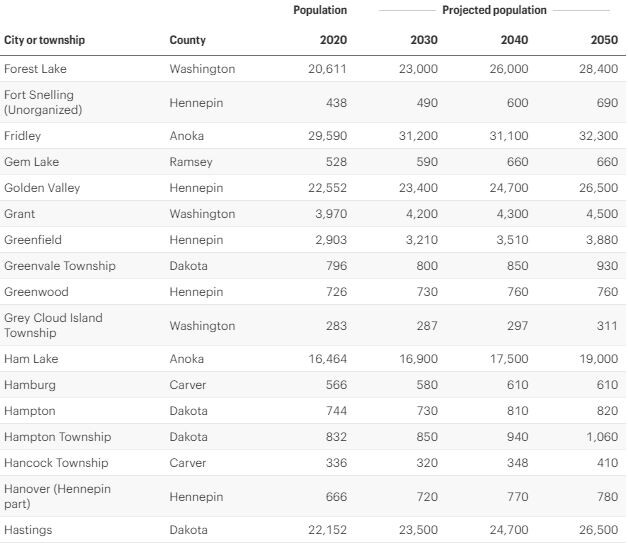
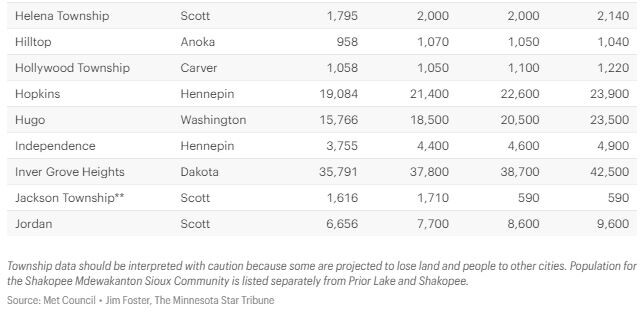
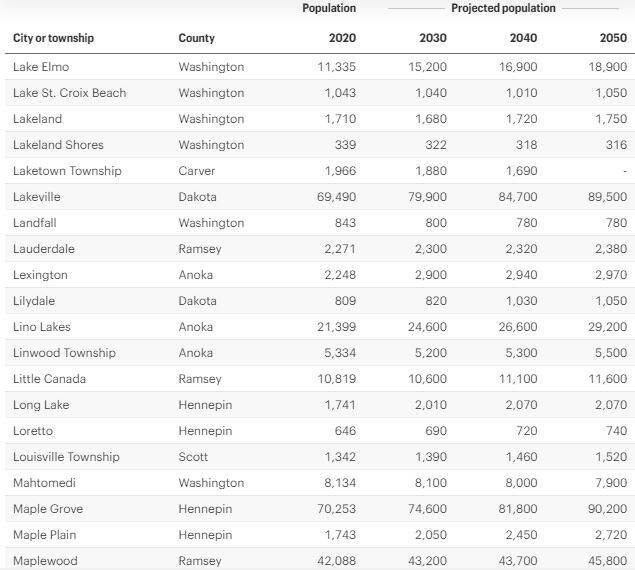
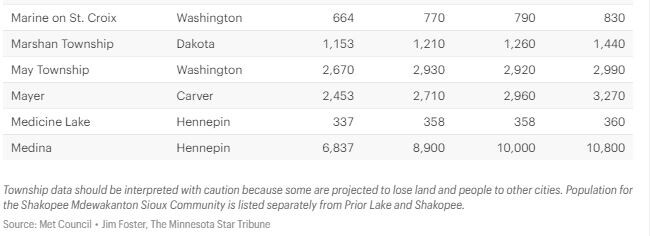
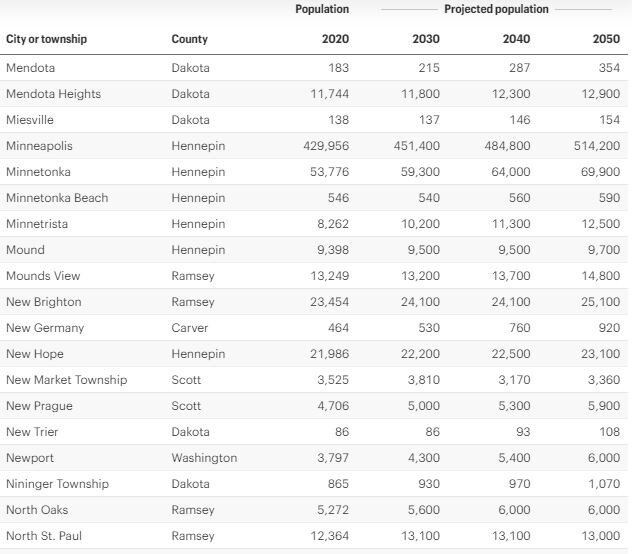
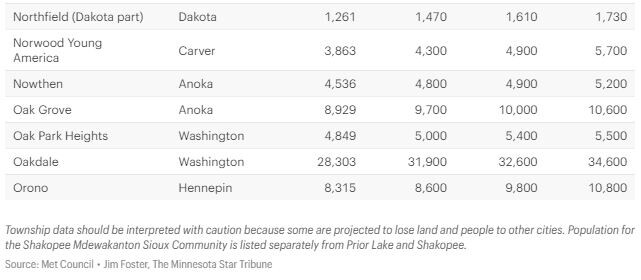
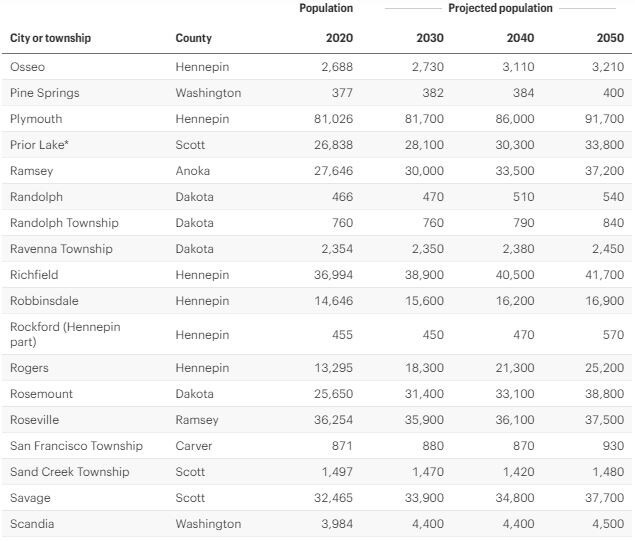
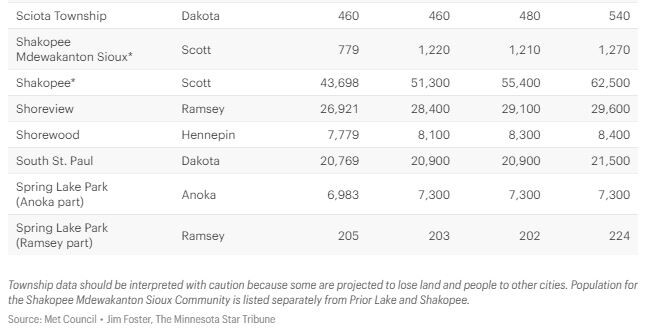
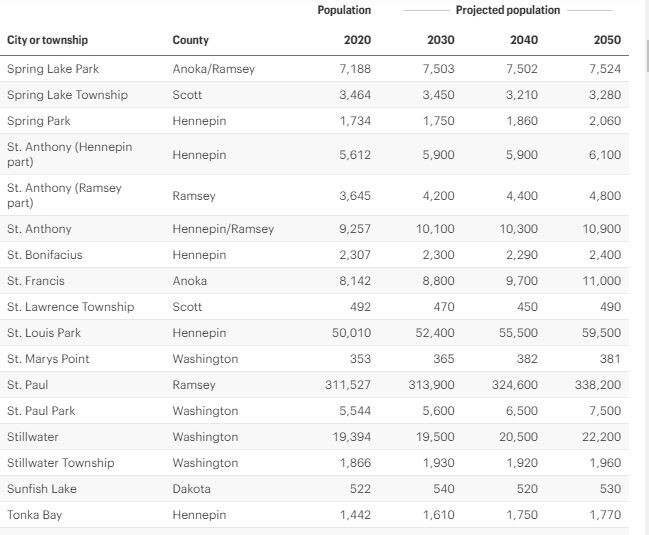
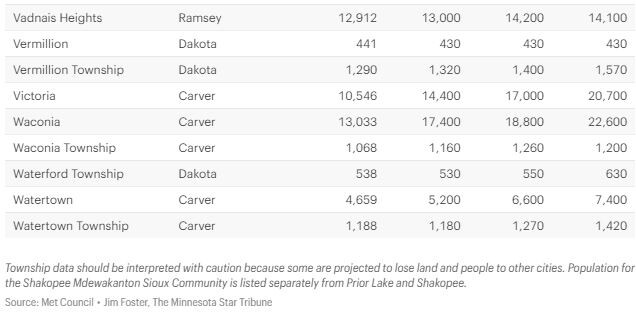
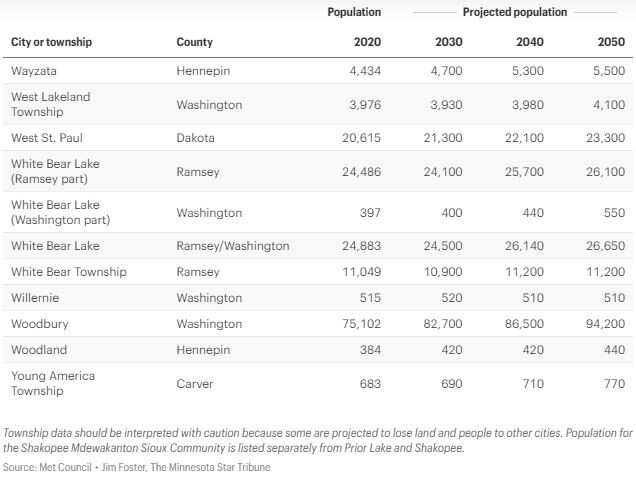
Minneapolis might reach 500,000 people — by 2050.
Minneapolis mayors going back to R.T. Rybak and Betsy Hodges set goals to grow the city to 500,000 residents.
It hasn’t happened as fast they hoped — during their terms, the city was growing at its fastest rate since the 1950s — but might be possible in another 25 years.
Recent census counts put Minneapolis about 75,000 people short, and growth has trended toward the suburbs.
Some of the factors driving that switch: Many millennials who pushed demand for urban living have moved to the suburbs. And it’s no longer as important for many workers to live close to their offices.
“We went from having a small share of the population doing remote work ... to having, I think it’s over 20% of the population that does that at least once a week now,” Graham said.
The parts of Minneapolis that have seen big growth - along transit lines, along the river and near the University of Minnesota - are building out, so housing growth could slow in coming decades.
While housing continues to go up across the city, it might not be at as massive a scale. “A lot of the site availability that existed 20 years ago, the prime plums have been utilized,” Graham said.
So the city is still forecast to grow but more slowly.
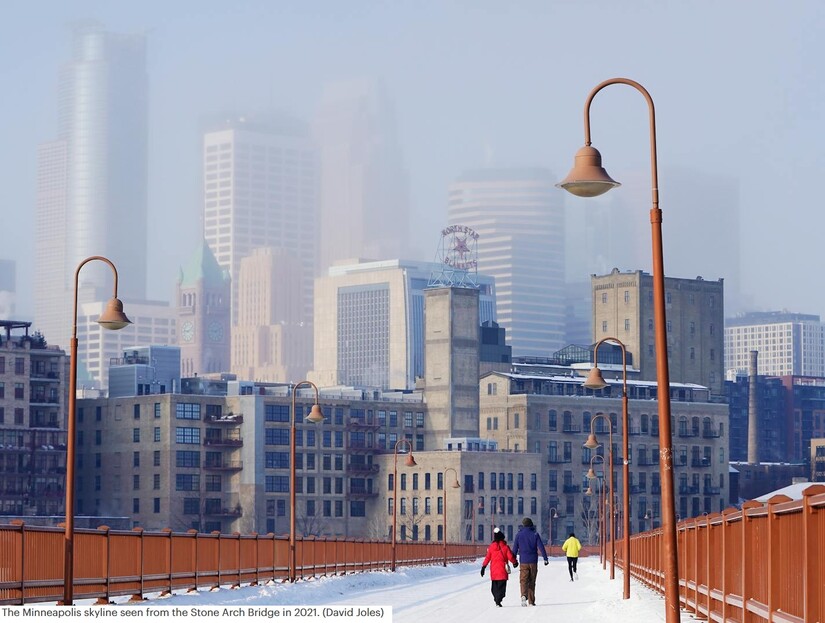
Big cities are forecast to get even bigger
Minneapolis and St. Paul are forecast to add the most people. Minneapolis is expected to add 84,000 residents while St. Paul is expected to add 27,000 residents.
Large suburbs, including Eden Prairie, Lakeville, Blaine, Maple Grove and Woodbury are also expected to see big increases in population.
“Those remain communities that still have land supply and are still seeing developer interest,” Graham said.
Lakeville Mayor Luke Hellier told the Star Tribune last year that low pandemic-era interest rates and changing commuting patterns have facilitated growth there, in both housing and business development.
“We’ve had interest from some commercial and retail that we hadn’t had, and we’ve had a ton of investment in the health care, medical office space,” Hellier said.
Some of the fastest-growing cities are small
The small southwestern suburb of Carver has been growing rapidly since the 2000s, when Hwy. 212 was expanded from two to four lanes, Mayor Courtney Johnson said.
“That was kind of like the turnkey moment that really started Carver’s population growth,” Johnson said.
The Met Council forecast calls for Carver’s population to triple — adding 10,000 people — between 2020 and 2050. That’s the fastest growth rate forecast for any metro-area city.
And it might grow even more than current estimates: Carver is among the cities that have been in touch with Graham and colleagues to revise their forecasts upward, citing developments not on the horizon when the Met Council gathered the data.
Carver isn’t just adding people, it’s adding land through an annexation plan with Dahlgren Township.
“When it’s the right time for them and their families to transfer ownership and to sell their pieces of land, those plots become part of the city of Carver,” Johnson said.
SOURCE: StarTribune